 It’s always with a sense of sadness that we at the Freak look back on some of the larger losses the classic film world suffered over the last year.
It’s always with a sense of sadness that we at the Freak look back on some of the larger losses the classic film world suffered over the last year.
 Jules Dassin. American director, screenwriter and actor who found success making movies in Europe after he was blacklisted in the United States because of his earlier ties to the Communist Party, died Athens, where he had lived since the 1970s. He was 96. Mr. Dassin is most widely remembered for films he made after he fled Hollywood in the 1950s, including “Never on Sunday” (1960), with the Greek actress Melina Mercouri, whom he later married; “Topkapi”(1964), with Ms. Mercouri, Peter Ustinov and Maximilian Schell; and the 1954 French thriller “Rififi.” ( from The New York Times, April 1, 2008)
Jules Dassin. American director, screenwriter and actor who found success making movies in Europe after he was blacklisted in the United States because of his earlier ties to the Communist Party, died Athens, where he had lived since the 1970s. He was 96. Mr. Dassin is most widely remembered for films he made after he fled Hollywood in the 1950s, including “Never on Sunday” (1960), with the Greek actress Melina Mercouri, whom he later married; “Topkapi”(1964), with Ms. Mercouri, Peter Ustinov and Maximilian Schell; and the 1954 French thriller “Rififi.” ( from The New York Times, April 1, 2008) Mel Ferrer. This gaunt, lanky and graceful player, who after a successful career as a radio producer-director and as a dancer and actor on Broadway, moved into film, first as a director and then as a reserved, sensitive and usually romantic leading man. Married to Audrey Hepburn from 1954 to 1968, Ferrer co-starred with her in “War and Peace” (1956), directed her in “Green Mansions” (1959) and produced the tense thriller, “Wait Until Dark” (1967). Mr. Ferrer had a total of 61 credits to his name. (from www.tcm.com)
Mel Ferrer. This gaunt, lanky and graceful player, who after a successful career as a radio producer-director and as a dancer and actor on Broadway, moved into film, first as a director and then as a reserved, sensitive and usually romantic leading man. Married to Audrey Hepburn from 1954 to 1968, Ferrer co-starred with her in “War and Peace” (1956), directed her in “Green Mansions” (1959) and produced the tense thriller, “Wait Until Dark” (1967). Mr. Ferrer had a total of 61 credits to his name. (from www.tcm.com)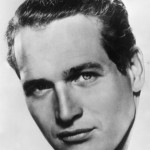 Paul Newman. An iconic figure in Hollywood history, Paul Newman was an Academy Award-winning actor, director, and noted philanthropist who helped define the male lead in motion pictures from the mid-1950s through the 21st century. A background in Method acting helped to deliver his enormous personal charm, intelligence and strength of character to a wide variety of roles – from underdog boxer Rocky Graziano in “Somebody Up There Likes Me” (1955) and the damaged Brick in “Cat on a Hot Tin Roof” (1958), to roguish anti-heroes in “Harper” (1966), “Cool Hand Luke” (1967), and “Butch Cassidy and the Sundance Kid” (1969). He continued to command audiences and critics in his sixth and seventh decade in films like “The Color of Money” (1986), which earned him an Oscar; “Nobody’s Fool” (1994); and “The Road to Perdition” (2004), while off-screen, he set the standard for celebrity-driven charities with his Newman’s Own brand of foods, which brought $200 million to causes, and the Hole in the Wall Gang camp for seriously ill children. (from www.tcm.com)
Paul Newman. An iconic figure in Hollywood history, Paul Newman was an Academy Award-winning actor, director, and noted philanthropist who helped define the male lead in motion pictures from the mid-1950s through the 21st century. A background in Method acting helped to deliver his enormous personal charm, intelligence and strength of character to a wide variety of roles – from underdog boxer Rocky Graziano in “Somebody Up There Likes Me” (1955) and the damaged Brick in “Cat on a Hot Tin Roof” (1958), to roguish anti-heroes in “Harper” (1966), “Cool Hand Luke” (1967), and “Butch Cassidy and the Sundance Kid” (1969). He continued to command audiences and critics in his sixth and seventh decade in films like “The Color of Money” (1986), which earned him an Oscar; “Nobody’s Fool” (1994); and “The Road to Perdition” (2004), while off-screen, he set the standard for celebrity-driven charities with his Newman’s Own brand of foods, which brought $200 million to causes, and the Hole in the Wall Gang camp for seriously ill children. (from www.tcm.com)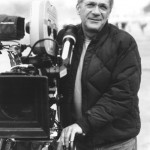 Sydney Pollack. One of the rare Hollywood talents who excelled at both acting and directing, Sydney Pollack fell haphazardly into a craft that eventually earned him three Oscar nominations and one Academy Award. Thanks to his early career as an acting coach, Pollack developed a reputation for being one of the best – if not the best – director for actors to work with. But his filmmaking style – or lack thereof – was without a signifying mark or defining element with which audiences could identify. In fact, it was quite easy to walk out of the theater having enjoyed the movie without ever knowing Pollack was the director. Be that as it may, Pollack crafted excellent films in his four decades as a filmmaker, adding such luminous titles like “They Shoot Horses, Don’t They?” (1969), “Three Days of the Condor” (1973), “Tootsie” (1982) and “Out of Africa” (1985) to the American filmmaking canon. Despite a lack of visual flare, American cinema would have suffered without Pollack’s steady contributions. (from www.tcm.com)
Sydney Pollack. One of the rare Hollywood talents who excelled at both acting and directing, Sydney Pollack fell haphazardly into a craft that eventually earned him three Oscar nominations and one Academy Award. Thanks to his early career as an acting coach, Pollack developed a reputation for being one of the best – if not the best – director for actors to work with. But his filmmaking style – or lack thereof – was without a signifying mark or defining element with which audiences could identify. In fact, it was quite easy to walk out of the theater having enjoyed the movie without ever knowing Pollack was the director. Be that as it may, Pollack crafted excellent films in his four decades as a filmmaker, adding such luminous titles like “They Shoot Horses, Don’t They?” (1969), “Three Days of the Condor” (1973), “Tootsie” (1982) and “Out of Africa” (1985) to the American filmmaking canon. Despite a lack of visual flare, American cinema would have suffered without Pollack’s steady contributions. (from www.tcm.com)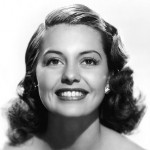 Cyd Charisse. Sinuous, dark-haired dancer with impossibly long legs who enlivened some of the finest MGM musicals of the 1950s. Classically trained yet very much a product of the post-“Oklahoma”, semi-modern dance school, the dynamic Charisse was one of the finest dancers ever to achieve star status in Hollywood. While her acting and singing abilities were decidedly modest, her grace, serenity and earthy sensuality (somewhat reminiscent of the more fiery Ava Gardner, whom she strongly resembled) made her presence a decided plus. Charisse starred opposite musical comedy luminaries Fred Astaire and Gene Kelly in such films as “The Band Wagon” (1953), “Brigadoon” (1954), “It’s Always Fair Weather” (1955) and “Silk Stockings” (1957) and later appeared in straight dramatic fare like Nicholas Ray’s “Party Girl (1958) and Vincente Minnelli’s “Two Weeks in Another Town” (1962) before her film career petered out. (from www.tcm.com)Legs is a comprehensive website dedicated to Ms. Charisse.
Cyd Charisse. Sinuous, dark-haired dancer with impossibly long legs who enlivened some of the finest MGM musicals of the 1950s. Classically trained yet very much a product of the post-“Oklahoma”, semi-modern dance school, the dynamic Charisse was one of the finest dancers ever to achieve star status in Hollywood. While her acting and singing abilities were decidedly modest, her grace, serenity and earthy sensuality (somewhat reminiscent of the more fiery Ava Gardner, whom she strongly resembled) made her presence a decided plus. Charisse starred opposite musical comedy luminaries Fred Astaire and Gene Kelly in such films as “The Band Wagon” (1953), “Brigadoon” (1954), “It’s Always Fair Weather” (1955) and “Silk Stockings” (1957) and later appeared in straight dramatic fare like Nicholas Ray’s “Party Girl (1958) and Vincente Minnelli’s “Two Weeks in Another Town” (1962) before her film career petered out. (from www.tcm.com)Legs is a comprehensive website dedicated to Ms. Charisse.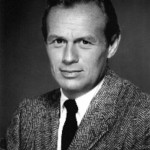 Richard Widmark. A charismatic, compact Broadway actor whose early roles in features were often as tough guys or heavies, Richard Widmark earned a Best Supporting Actor Oscar nomination and instant stardom for his electrifying 1947 screen debut in the gangster saga “Kiss of Death” as a giggling psychopathic killer, he pushed a crippled old lady down a flight of stairs. He followed up with another villainous role in the fine film noir “Road House” (1948), but successfully worked to avoid typecasting soon thereafter. Widmark later played the disinterested hero of Sam Fuller’s striking, ambiguous Cold War thriller, “Pickup on South Street” (1953), and was superb in the title role of Don Siegel’s New York cop tale “Madigan” (1968). (from www.tcm.com)
Richard Widmark. A charismatic, compact Broadway actor whose early roles in features were often as tough guys or heavies, Richard Widmark earned a Best Supporting Actor Oscar nomination and instant stardom for his electrifying 1947 screen debut in the gangster saga “Kiss of Death” as a giggling psychopathic killer, he pushed a crippled old lady down a flight of stairs. He followed up with another villainous role in the fine film noir “Road House” (1948), but successfully worked to avoid typecasting soon thereafter. Widmark later played the disinterested hero of Sam Fuller’s striking, ambiguous Cold War thriller, “Pickup on South Street” (1953), and was superb in the title role of Don Siegel’s New York cop tale “Madigan” (1968). (from www.tcm.com)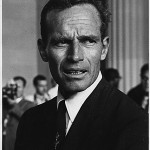 Charlton Heston. Charlton Heston’s career as a commanding male lead has provided a one-person Hollywood trek through the pages of world history and a forceful, conservative vision of a world in which America always wins. The Northwestern University acting student’s first film appearances were in ambitious amateur 16mm productions of “Peer Gynt” (1941) and “Julius Caesar” (1949), both directed by fellow student David Bradley. After WWII service, he and his wife Lydia Clarke worked as models in New York and ran a theater in Asheville, North Carolina before Heston found success on Broadway in Katharine Cornell’s production of “Antony and Cleopatra” (1947). He also made a vivid impression on early TV, especially in a flurry of dashing romantic leads (Heathcliff, Rochester, Petruchio) on the famous drama anthology “Studio One”. By the time he went to Hollywood to act in William Dieterle’s moody film noir “Dark City” (1950), Heston was already a star, listed in the credits ahead of the more established Lizabeth Scott. Over the next four decades he rarely had less than top billing. (from www.tcm.com)
Charlton Heston. Charlton Heston’s career as a commanding male lead has provided a one-person Hollywood trek through the pages of world history and a forceful, conservative vision of a world in which America always wins. The Northwestern University acting student’s first film appearances were in ambitious amateur 16mm productions of “Peer Gynt” (1941) and “Julius Caesar” (1949), both directed by fellow student David Bradley. After WWII service, he and his wife Lydia Clarke worked as models in New York and ran a theater in Asheville, North Carolina before Heston found success on Broadway in Katharine Cornell’s production of “Antony and Cleopatra” (1947). He also made a vivid impression on early TV, especially in a flurry of dashing romantic leads (Heathcliff, Rochester, Petruchio) on the famous drama anthology “Studio One”. By the time he went to Hollywood to act in William Dieterle’s moody film noir “Dark City” (1950), Heston was already a star, listed in the credits ahead of the more established Lizabeth Scott. Over the next four decades he rarely had less than top billing. (from www.tcm.com) Suzanne Pleshette. Known for her quick-wit and air of urban sophistication, actress Suzanne Pleshette enjoyed more than four decades in entertainment, appearing in over 30 films, starring in four sitcoms, and earning four Emmy nominations. She was best known for her portrayal of the wisecracking modern wife opposite straight man Bob Newhart in the acclaimed sitcom “The Bob Newhart Show” (CBS, 1972-78), but had earned prior accolades as a feisty and glamorous ingénue on Broadway. An early career of madcap comedies, forgettable features, and dozens of TV spots generally failed to showcase Pleshette’s studied dramatic chops or her racy, off-the cuff-humor, but she was at her best in the improvisational, bantering atmosphere of the many talk and game shows of the 1960s into the 1970s. Sadly, it was an era that had not yet figured out what to do with women who were not interested in careers as pinups or suburban TV moms, proving Pleshette was ahead of her time. (from www.tcm.com)
Suzanne Pleshette. Known for her quick-wit and air of urban sophistication, actress Suzanne Pleshette enjoyed more than four decades in entertainment, appearing in over 30 films, starring in four sitcoms, and earning four Emmy nominations. She was best known for her portrayal of the wisecracking modern wife opposite straight man Bob Newhart in the acclaimed sitcom “The Bob Newhart Show” (CBS, 1972-78), but had earned prior accolades as a feisty and glamorous ingénue on Broadway. An early career of madcap comedies, forgettable features, and dozens of TV spots generally failed to showcase Pleshette’s studied dramatic chops or her racy, off-the cuff-humor, but she was at her best in the improvisational, bantering atmosphere of the many talk and game shows of the 1960s into the 1970s. Sadly, it was an era that had not yet figured out what to do with women who were not interested in careers as pinups or suburban TV moms, proving Pleshette was ahead of her time. (from www.tcm.com) Roy Scheider. a stage actor with a background in the classics who became one of the leading figures in the American film renaissance of the 1970s, died on Sunday afternoon in Little Rock, Ark. He was 75 and lived in Sag Harbor, N.Y. Mr. Scheider’s rangy figure, gaunt face and emotional openness made him particularly appealing in everyman roles, most famously as the agonized police chief of “Jaws,” Steven Spielberg’s 1975 breakthrough hit, about a New England resort town haunted by the knowledge that a killer shark is preying on the local beaches. (from The New York Times, February 11, 2008)
Roy Scheider. a stage actor with a background in the classics who became one of the leading figures in the American film renaissance of the 1970s, died on Sunday afternoon in Little Rock, Ark. He was 75 and lived in Sag Harbor, N.Y. Mr. Scheider’s rangy figure, gaunt face and emotional openness made him particularly appealing in everyman roles, most famously as the agonized police chief of “Jaws,” Steven Spielberg’s 1975 breakthrough hit, about a New England resort town haunted by the knowledge that a killer shark is preying on the local beaches. (from The New York Times, February 11, 2008)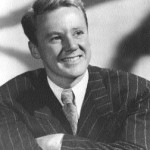 Van Johnson. Van Johnson was one of the last surviving matinee idols of Hollywood’s golden age, an actor whose affable charm and boyish good looks helped make him a star during World War II.Johnson was the boy next door or the soldier, the sailor or the bomber pilot who used to live down the street in a dozen MGM movies from 1942 to 1946. He earned praise in his first dramatic role, as Lt. Ted Lawson, the pilot whose story is told in “Thirty Seconds Over Tokyo”> (1944), and later as the naïve naval lieutenant who is compelled to relieve of command the erratic Captain Queeg (Humphrey Bogart) in “The Caine Mutiny,” a 1954 adaptation of the Herman Wouk novel. (from The New York Times, December 12, 2008)
Van Johnson. Van Johnson was one of the last surviving matinee idols of Hollywood’s golden age, an actor whose affable charm and boyish good looks helped make him a star during World War II.Johnson was the boy next door or the soldier, the sailor or the bomber pilot who used to live down the street in a dozen MGM movies from 1942 to 1946. He earned praise in his first dramatic role, as Lt. Ted Lawson, the pilot whose story is told in “Thirty Seconds Over Tokyo”> (1944), and later as the naïve naval lieutenant who is compelled to relieve of command the erratic Captain Queeg (Humphrey Bogart) in “The Caine Mutiny,” a 1954 adaptation of the Herman Wouk novel. (from The New York Times, December 12, 2008)
www.melferrer.com is a great fan site for those looking for more information.
www.passionforcinema.com has a stirring tribute.
Livingincinema.com has a brief but powerful commentary.
cinemaverdict.com has a great overview of Heston’s work.
royscheider.net is a well researched resource on Mr. Scheider.